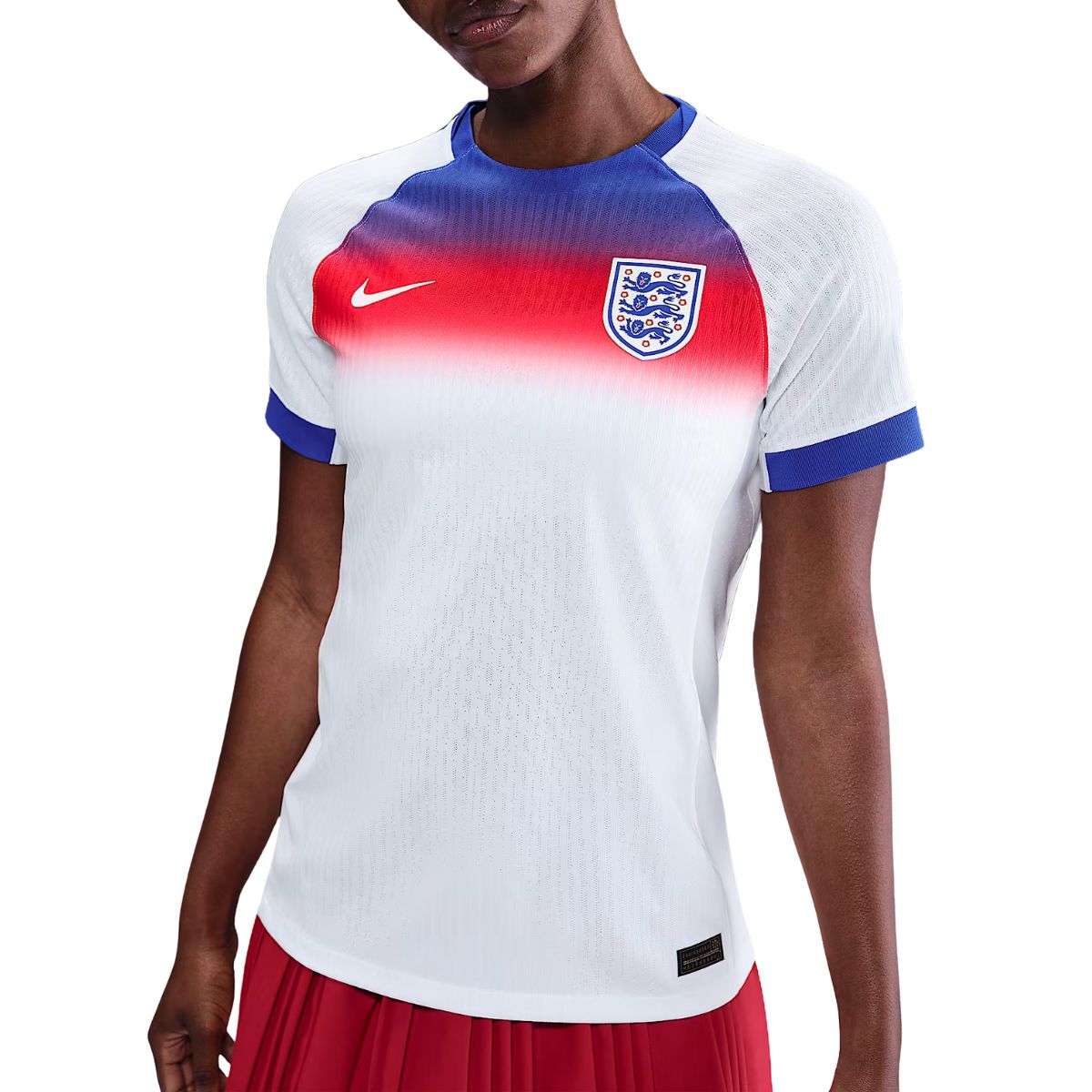As England Make History With Second Consecutive Euros Win - 12 Other Game-Changing Moments That Changed the Sport Forever
From a 50-year ban to sold-out stadiums, writer Dionne Brighton looks back on the history-making moments of adversity in the women's game.
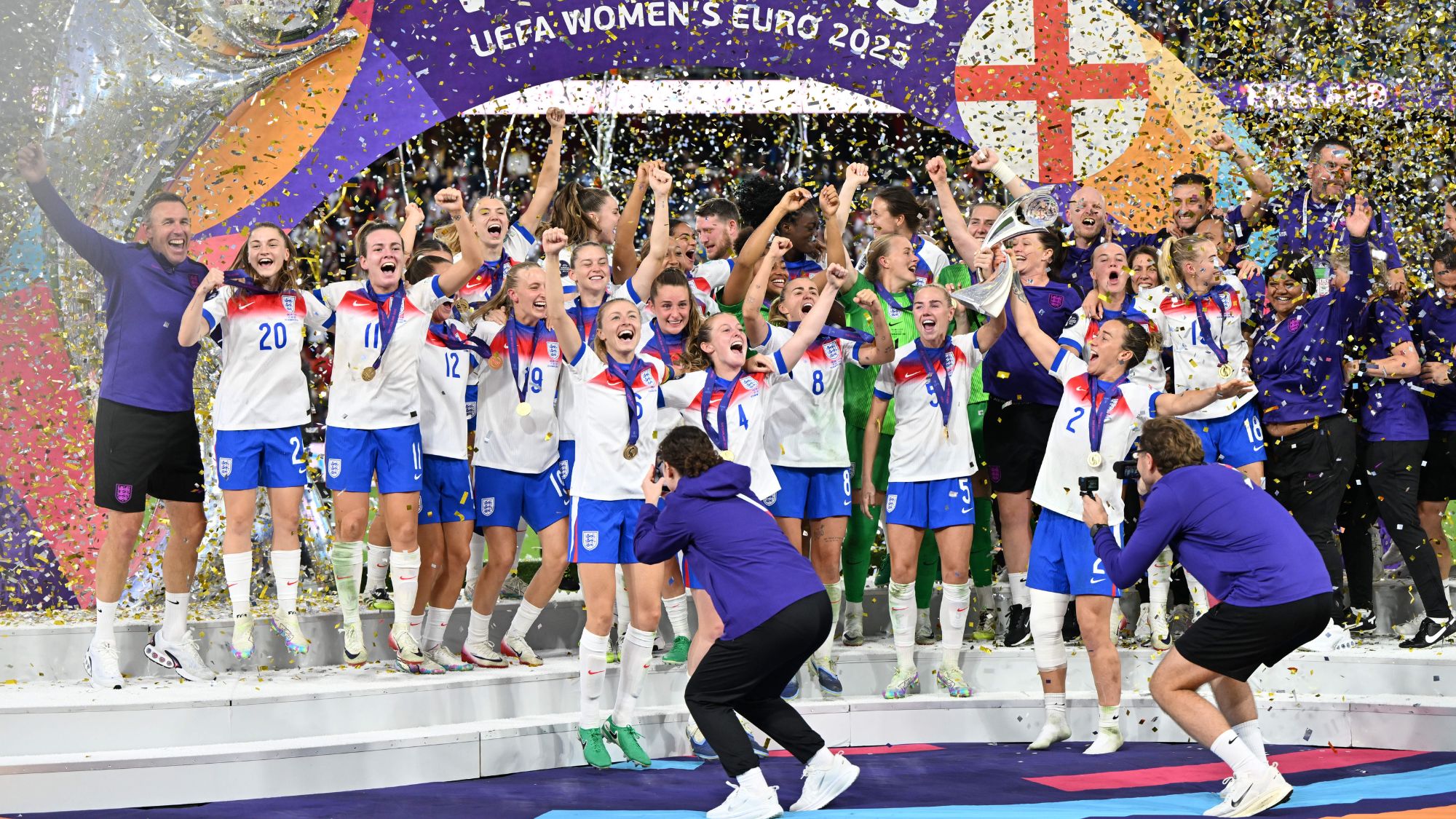
- 1921: The FA banning women’s football from official grounds
- 1971: The ban is lifted and the Women’s Football Association is formed
- 1972: The England team win internationally for the first time
- 1999: The ladies begin to sell out stadiums
- 2002: Football becomes the most participated sport for women and girls
- 2005: The UEFA Women’s European Championship takes place in England
- 2010: The Women’s Super League is formed
- 2012: Women’s football takes the 2012 Olympics by storm
- 2021: A groundbreaking broadcast deal for Women’s football is signed
- 2022: The Lionesses become the the first England team to win the Euros in 60 years
- 2023: The Lionesses become the first England football team to make it to a World Cup final since 1966
- 2024: The awards just keep coming
- 2025: The Lionesses win their second consecutive Euros final
It was quite the weekend to be an England football fan. After a combination of nail-bitingly tense matches and last minute goals, the Lionesses made it to the Euros 2025 final, scooping the victory from rivals Spain and winning their second consecutive Euros final. Not only does this make them the first England football team to win two back to back finals and defend a title, but it also makes them the first England team ever to win on foreign soil.
How unprecedented, unrivalled, and history-making this achievement is isn't to be underestimated. England were the underdogs from the start of the tournament, losing their first match to France 2-1.
But still they soldiered on, inspiring the next generation and showing a nation what the true meaning of resilience, grit, and hope looks like.
They smashed previous attendance records out of the park, too - back in 2022, the Women's Euros final saw a record-breaking 574,875 head to Wembley to watch the final in person. Yesterday, overall attendance surpassed 657,000 in Basel, where the tournament was hosted.
With such an epic achievement still being celebrated nationwide, what better time to look back on the huge milestones we've seen in the women's game?
While there's no doubt been significant steps forward in not only the interest, but further funding and media coverage, it's important to acknowledge that women's football is still fighting back from a long and troubling history of marginalisation and misogyny. Female footballers still don't receive similar salaries to their male counterparts, aren't offered similar opportunities or facilities, and often aren't taken as seriously. During the Women's World Cup of 2023 - where the Lionesses fought their way to the final but narrowly missed out on a win - the players shared a statement reflecting their frustration that bonus talks weren't resolved ahead of the start of play.
That said, momentum is only continuing to build, and here at MC UK, we're all for it. We've run Women in Sport Guest Edits for three years now, with our first ever championing former England Captain and Vice-Captain Millie Bright and Vice-Captain Mary Earps ahead of their Euros win.
Celebrity news, beauty, fashion advice, and fascinating features, delivered straight to your inbox!
First stop in rewriting the rulebook? Accepting how far we've come. From the iconic Lionesses’ win finally bringing football home in 2022, to the Women’s Football Association being formed in 1969, to the first female football game being played in 1895, keep scrolling for thirteen standout moments that have shaped the sport as we know it.
13 of the biggest moments in women's football
A bit of background, first. While women’s football was established at the same time as men’s football, it wasn’t until World War One that it really took off. People wanted to watch the sport and the men were away fighting, so while women were taking to factories, they were also taking to the pitches, reportedly bringing in crowds of up to 53,000 people.
Dick Kerr Ladies F.C., one of England's earliest women's association football teams, even surpassed the men's league records, with their 1920 Boxing Day match believed to have made the most money of any English football game since records began.
When the World War ended, however, football was once more deemed unsuitable for women, and while "health concerns" were cited as the reasons, it seems it was actually more to do with a successful women’s league threatening the men’s. Essentially, society wanted to put women "back in their place".
According to the BBC, Dr Mary Scharlieb of Harley Street described women’s football as the "most unsuitable game" and "too much for a woman’s physical frame". In December 1921, the Football Association backed the decision that the sport was unsuitable for women, instructing its clubs "to refuse the use of their grounds for such matches".
In short, women's football was banned. And while the restriction was lifted 50 years later in 1971, it had already set the game back and changed it forever.
Now, a further 50 or so years after the lifting of the ban, we're still far from being on equal footing. But with female teams gaining more traction and respect by the day, there is hope that we're certainly on our way.
"The women’s game has grown," former England Captain Steph Houghton told me. "When I was playing at Arsenal, I don’t think people realised how good we actually were. I think there’s just a perception that we just play football but we’re not very good, and it was a challenge for us to try and prove those types of people wrong."
"We’ve really proved how far the women’s game has come," she continued. "Not just in terms of being on TV but in terms of actual technical ability, fitness levels and the fact that we give up a lot to be the athletes that we are."
"It is our duty to inspire young girls to play a sport," she concluded. "Whether it’s just for enjoyment and keeping fit, or to actually go on and try and make a career out of it. Women should inspire."
Women’s football isn’t just about the game – it’s about rejection, resilience and revival. It has taken a long history of struggle to get to where it is now. Keen to learn more? Keep scrolling.
1921: The FA banning women’s football from official grounds
While, as above, there was quite an appetite for football among women pre the 1920s, The FA banned women from playing on official football grounds in 1921. This was because the game was deemed "quite unsuitable for females and ought not to be encouraged.”
For context, this was only one year after 53,000 fans flocked to watch Dick Kerr’s and St Helen’s Ladies play at Goodison Park on boxing day, their biggest match to date. The ban could have changed the face of football forever, but the interest in women’s football was already piqued and would only continue to flourish, despite it taking fifty years for the ban to be lifted in 1971.
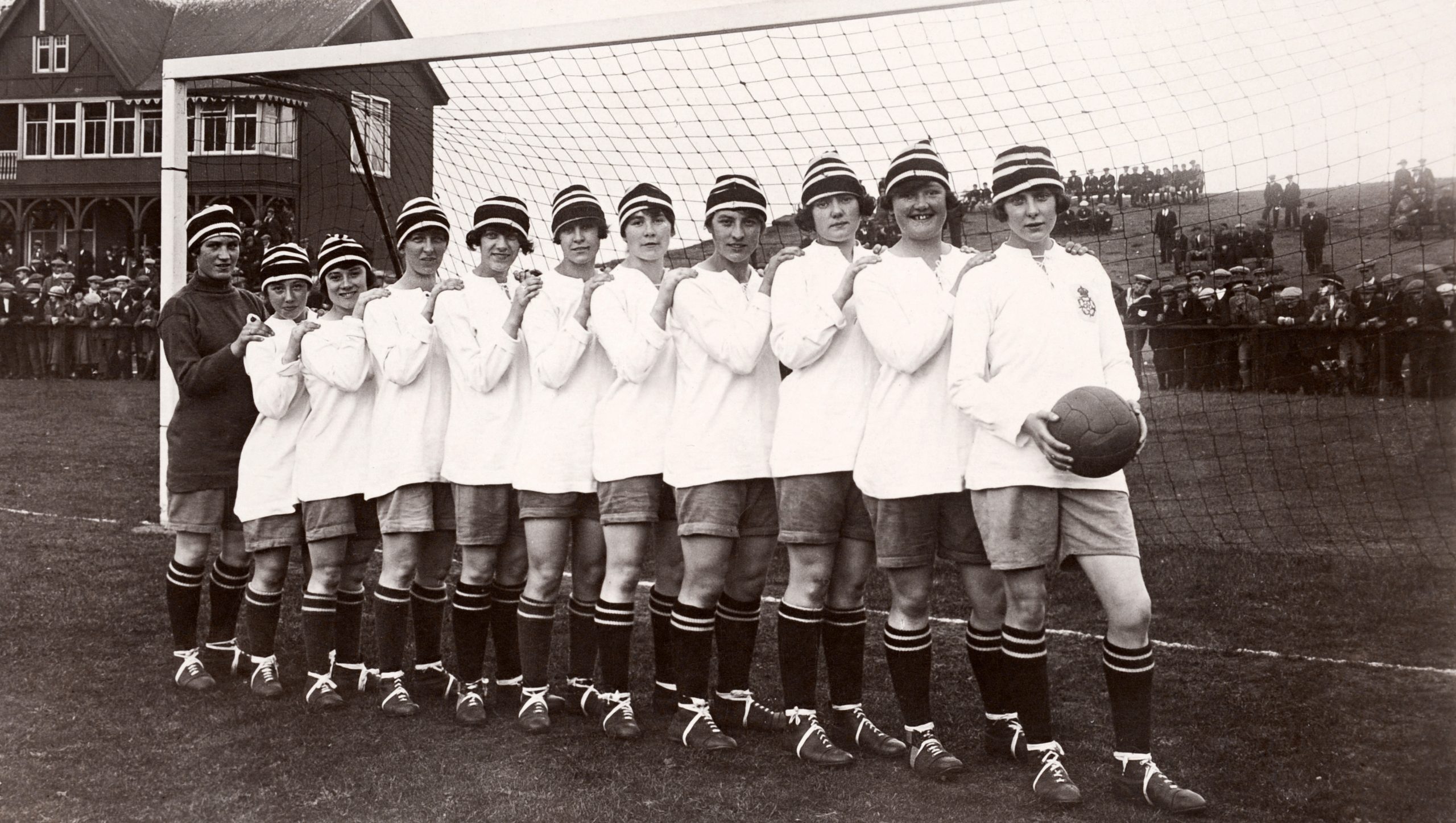
Kerr Ladies football team, founded in Preston, Lancashire, during World War One, who were undefeated British champions during the 1920-1921 season
1971: The ban is lifted and the Women’s Football Association is formed
In 1969 - forty years after the ban was put in place - 44 representatives from different clubs came together to form the Women’s Football Association. Just two years later, they'd successfully rallied for the ban on women's football to be lifted, meaning female footballers and clubs could use qualified referees and hire training pitches.
During their time, they saw the first-ever Women’s FA Cup Final occur before their power was moved over to the FA in 1993.
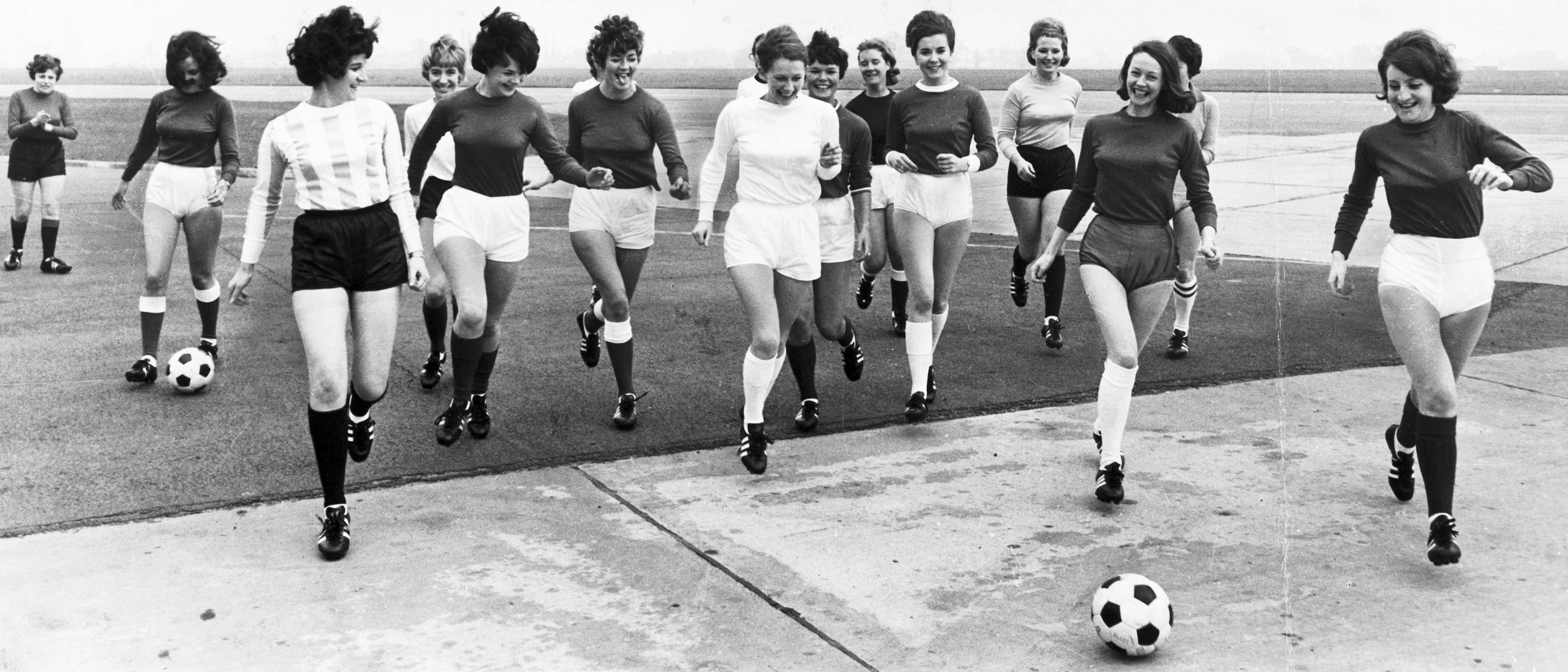
1972: The England team win internationally for the first time
A year after the ban was lifted, the England team played their first-ever international game against Scotland. Spoiler alert: they won, cementing their status as ones to watch out for.
For context, this was 100 years after the men’s first international match was played. Just imagine what women would've been able to achieve in the time they were banned from official pitches.
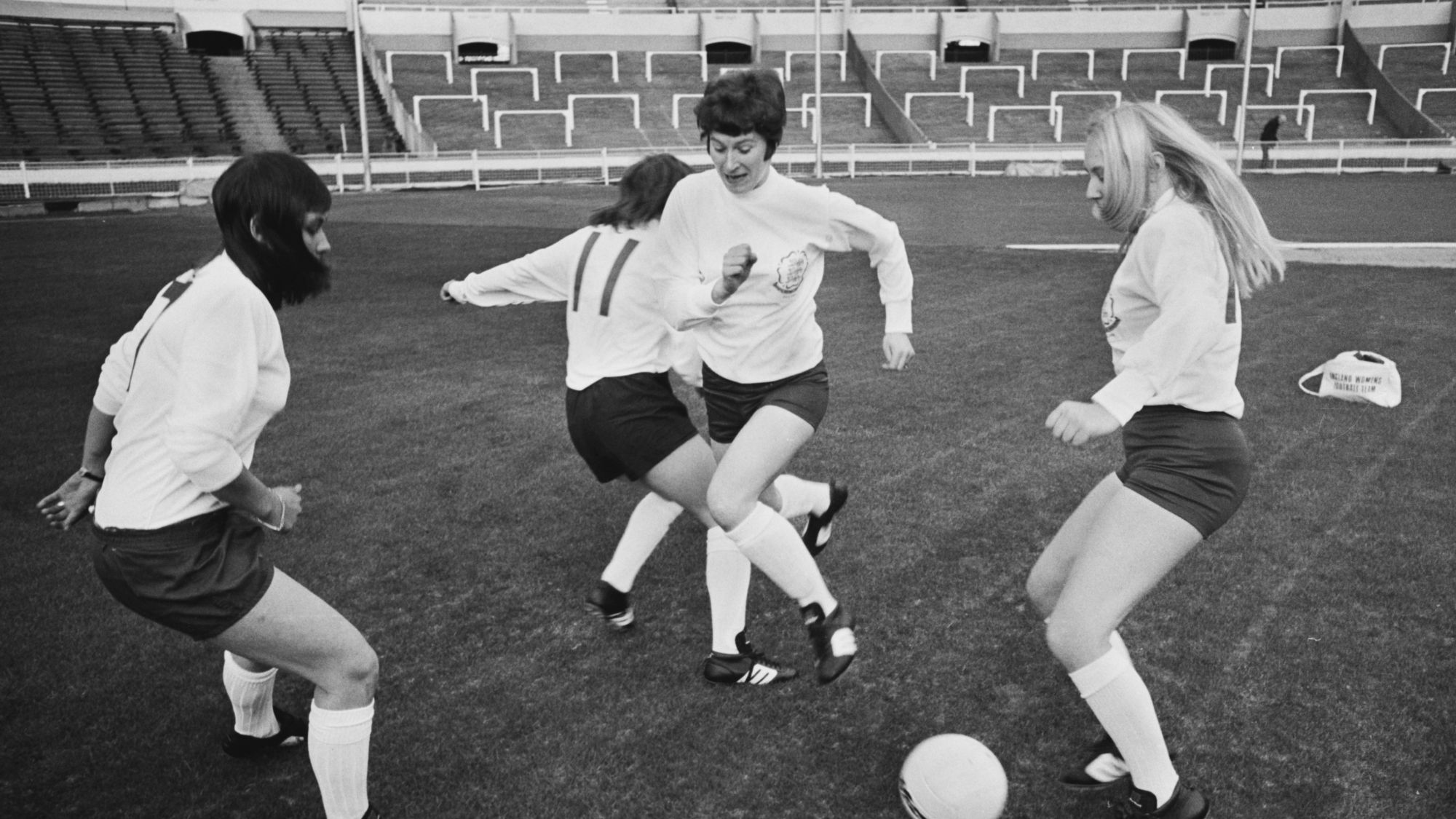
A training session with the England women's team in 1972
1999: The ladies begin to sell out stadiums
1999 saw the USA host the FIFA Women’s World Cup, where over 90,000 fans watched the final and the United States crowned champions. In recent years, women’s football in England has followed suit, with games being played at world-renowned stadiums such as Stamford Bridge and The Emirates to accommodate rising numbers of keen match-goers.
Chelsea Women's team sold out the season ticket allocation for their 2021/22 matches and have played at the historic Stamford Bridge on multiple occasions, most recently this season’s Champions League quarter-finals against Lyon Feminin. The red side of London matched this outstanding accomplishment when Arsenal Womens sold out the 60,704-seat Emirates Stadium in their semi-final clash with Wolfsburg (Health Editor Ally Head was there).
With the current trajectory of Women’s football, it will only be a matter of time before all Women's Super League teams are playing in and selling out larger stadiums.
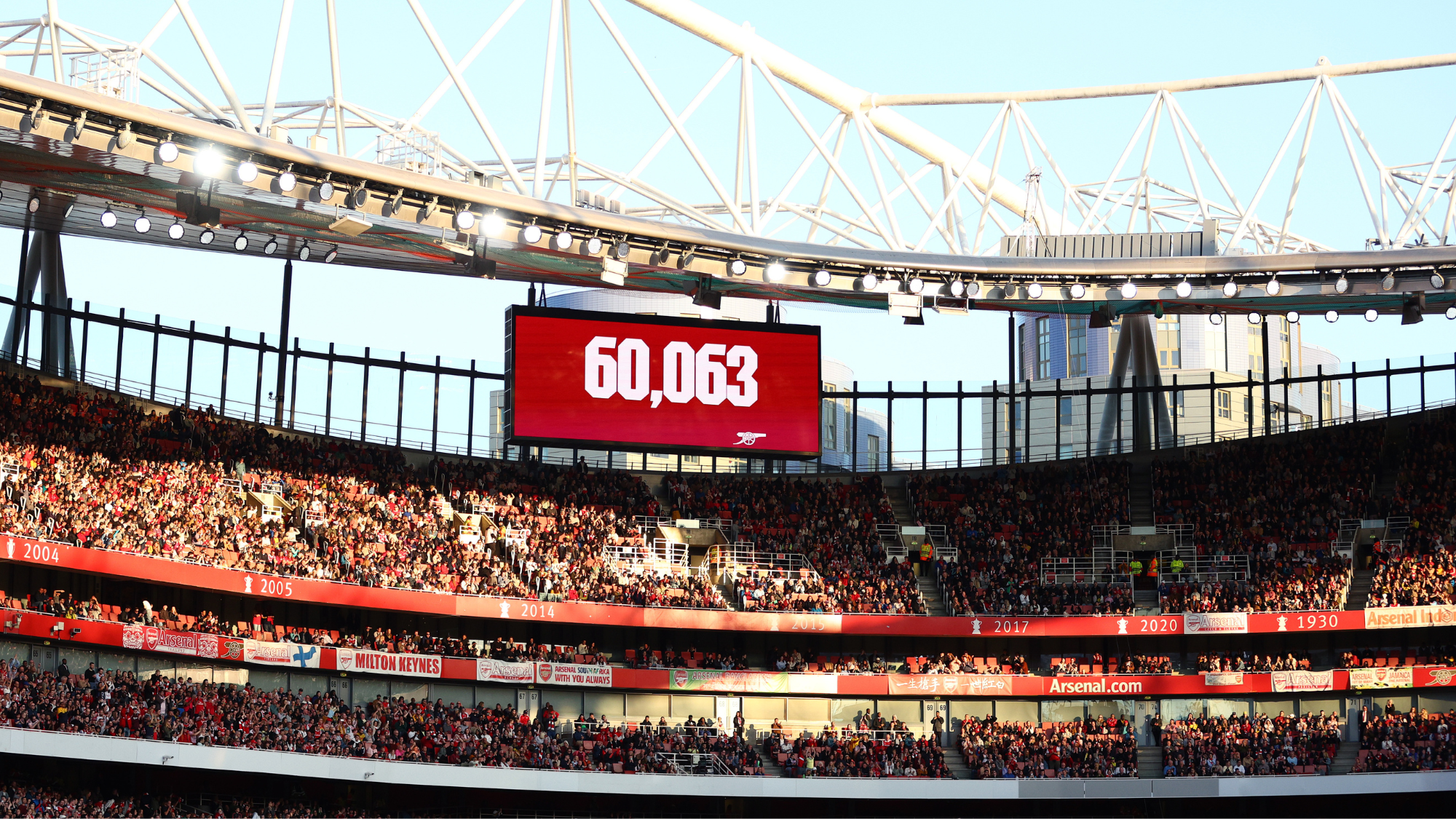
2002: Football becomes the most participated sport for women and girls
Did you know? In 2002, the FA revealed that football had become the top participation sport for women and girls in England. This was three years before their target and we reckon may have had something to do with Bend It Like Beckham being released the same year. (A classic).
Football remains the most participated team sport for women to this day - that said, there's still a long way to go in making sure all women feel confident enough to give team sport a go. Case in point: one 2022 Women in Sport survey found that 43% of teenage girls in the UK who previously considered themselves “sporty” and participated in sports felt a disconnect after the age of 11. Over 60% of these girls worried about a lack of confidence or being judged.
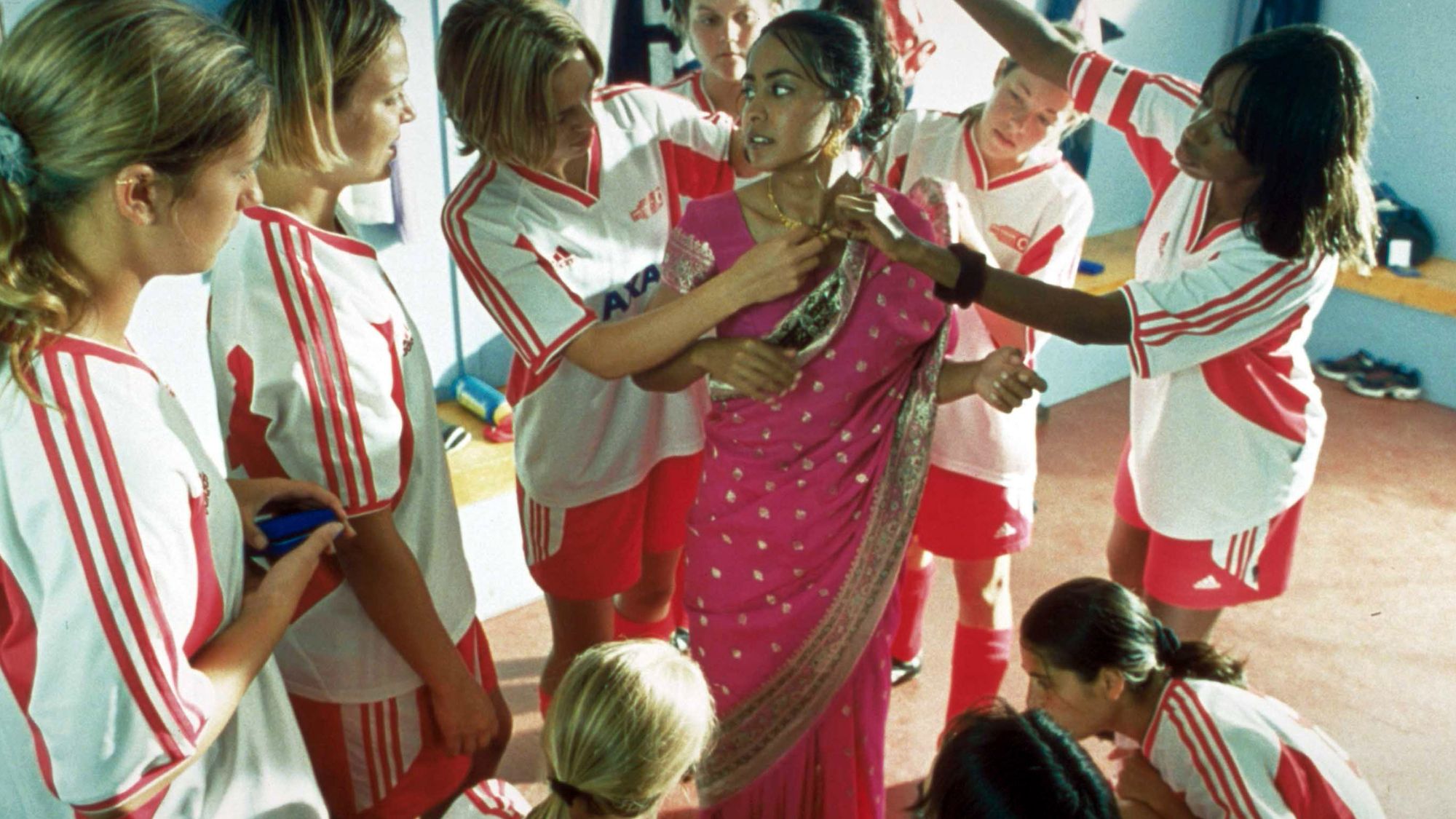
A scene from 2002 movie Bend It Like Beckham
2005: The UEFA Women’s European Championship takes place in England
Fast forward three years and the opening match of the UEFA Women’s European Championship saw an unprecedented number of fans and spectators.
A whopping 29,092 fans and spectators and 2.9 million viewers watched the opening game live on BBC and, although England didn’t make it past the group stages, interest in the game continued to rise.
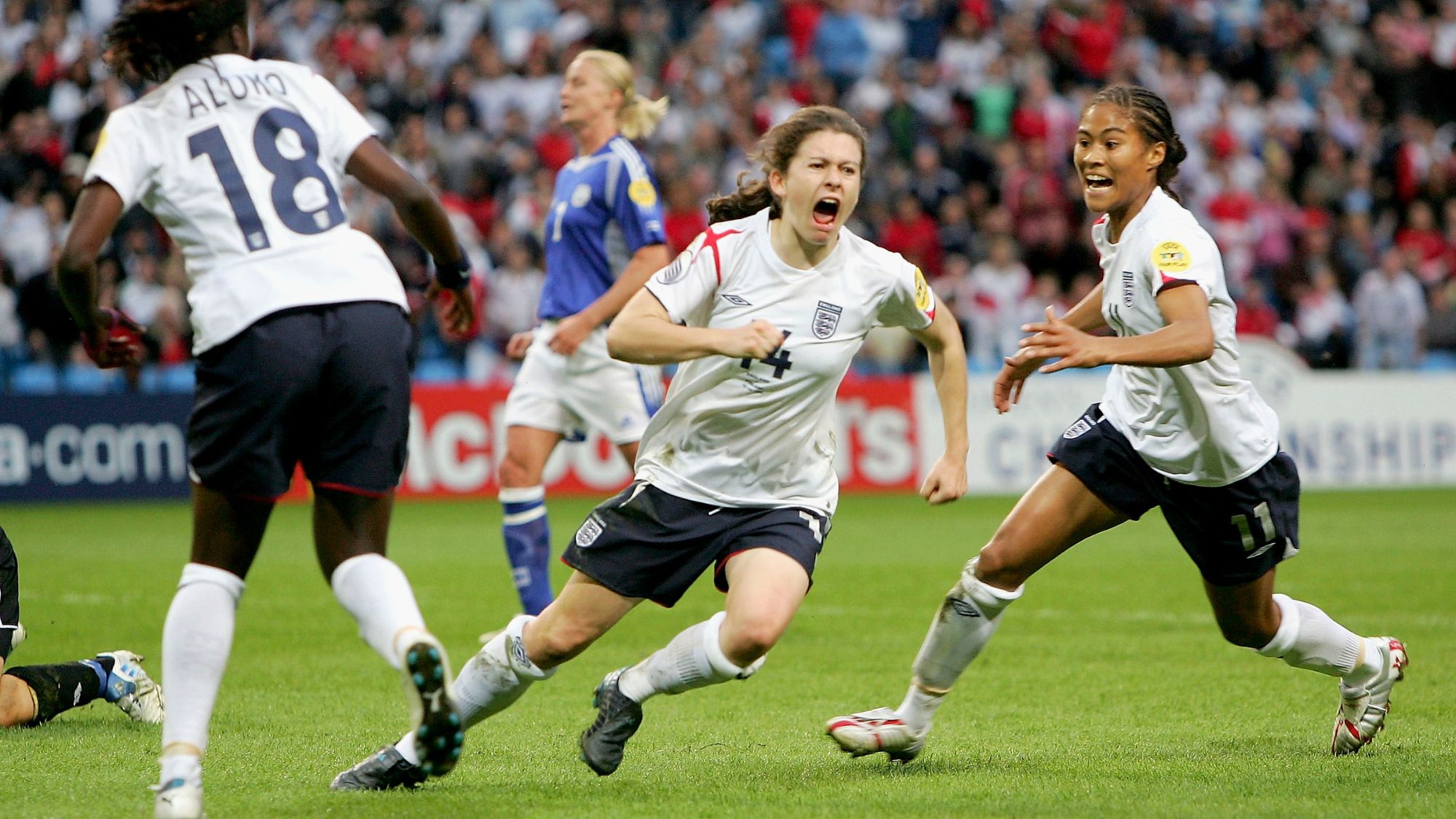
A 2005 match featuring the England Women's team
2010: The Women’s Super League is formed
Come 2010, the Women’s Super League was established.
Run by the Football Association, this replaced the FA Women’s Premier League National Division and became the highest level of football for women, with twelve professional teams taking part.
Sky and BBC would take ten years to broadcast the Women’s Super League on their channels. Despite this, the league’s formation was a momentous occasion in women’s football and was one of the only few professional leagues for women globally.
2012: Women’s football takes the 2012 Olympics by storm
You'll likely all remember the 2012 Olympics - a landmark moment in the United Kingdom's history, but also a seriously memorable moment for women’s football.
Why? Well, it was the first time a female football team represented Team GB. Of course, the crowd went wild, reshaping attitudes towards the women's game forever and giving the athletes the recognition they deserved. The world was watching, and 70,000 spectators filled Wembley Stadium as Team GB beat Brazil.
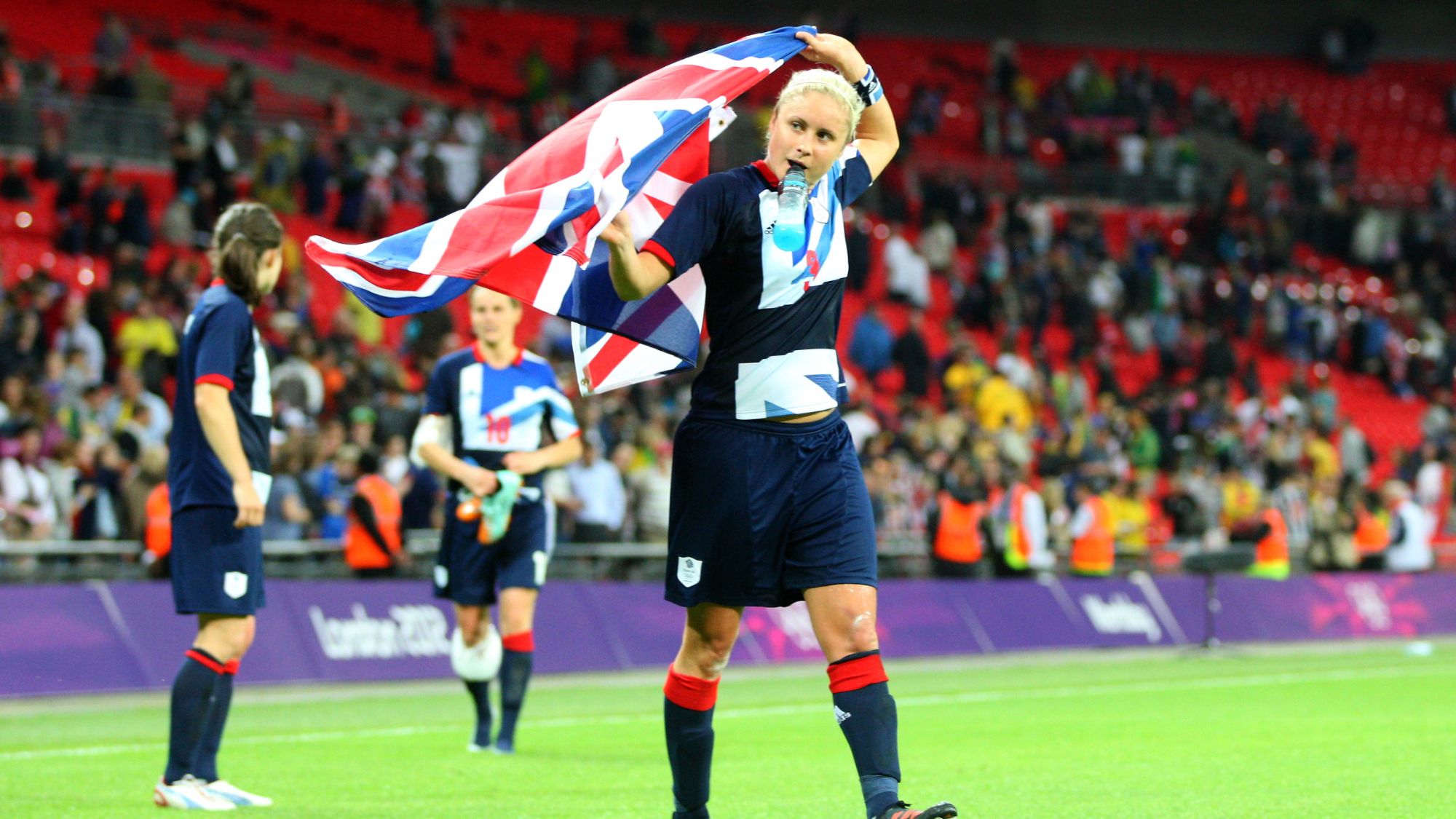
Stephanie Houghton - who scored the winning goal for Team GB - celebrating at the 2012 London Olympic Summer Games
2021: A groundbreaking broadcast deal for Women’s football is signed
Nearly ten years passed, and in 2021 both the BBC and Sky signed a three-year agreement to broadcast the Women’s Super League to give more access to women’s football.
This was the push that was needed for investment and interest in the sport. Multiple games were shown every weekend on TV. It was reported to be one of the biggest deals for any women’s league to date.
2022: The Lionesses become the the first England team to win the Euros in 60 years
Last but by no means least, England's 2-1 win against Germany in 2022 changed the face of the sport forever.
Arguably one of the most exciting moments in female football history (for us Brits, at least), it wasn't just about the win - rather, the fact 50 million people tuned in to watch (tournament organiser Uefa shared that was more than double the number who watched the previous Women's Euros in 2017).
It was also the first time women's football stopped the ten o’clock news.
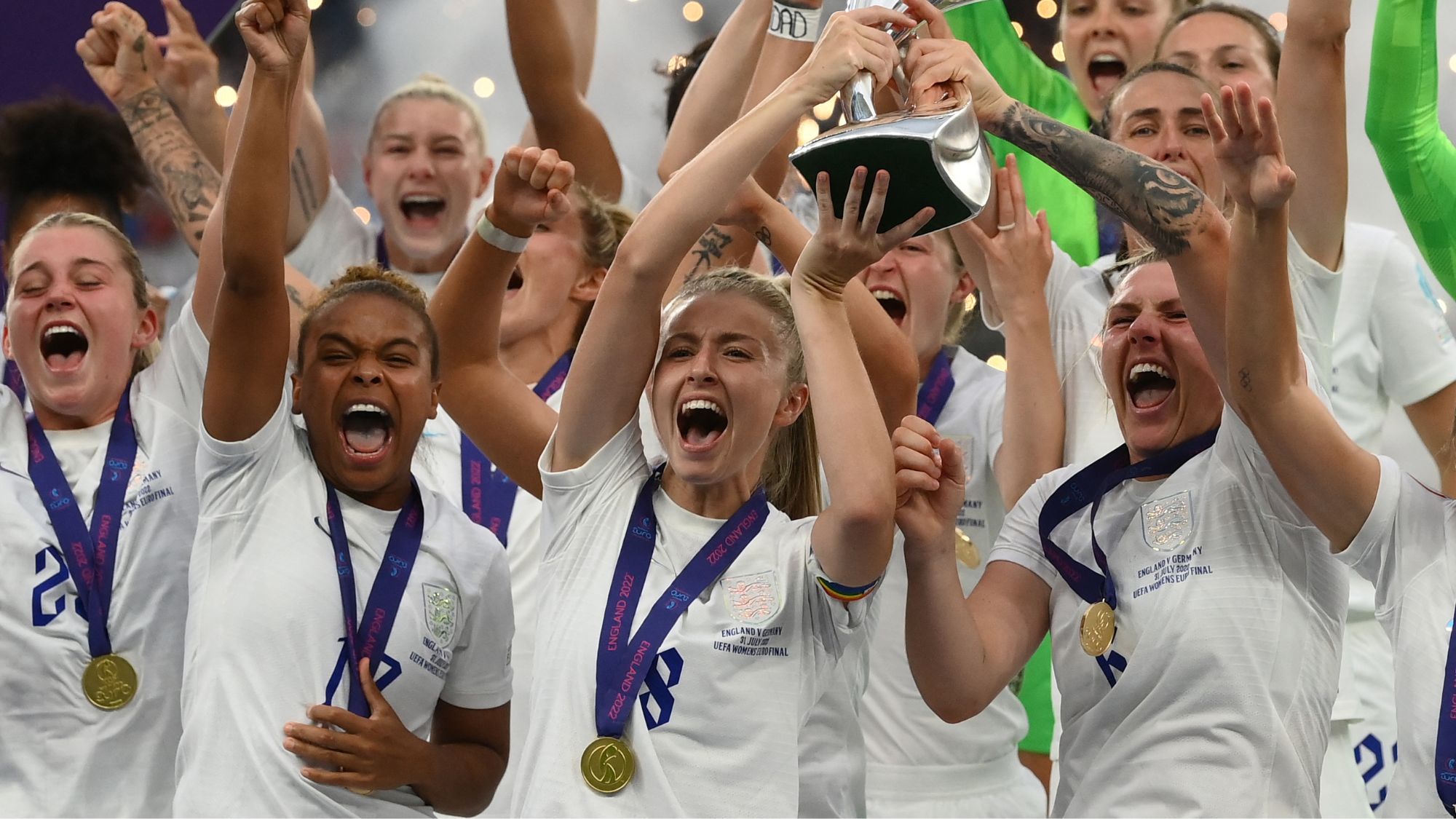
The England Women's squad lift the trophy after winning the Euros 2022
2023: The Lionesses become the first England football team to make it to a World Cup final since 1966
Come 2023, the Lionesses continued their winning streak by becoming the first England football team - men or women's - to make it to a World Cup final in 57 years.
This achievement isn't to be underestimated and reminded an entire nation what women can achieve. Following their Euros win the year prior, it cemented the team as arguably the most successful England football team in history.
While their narrow miss in the final was heartbreaking for many, their success throughout the tournament was a huge catalyst for change. Their perseverance, determination, skill and camaraderie inspired positivity nationwide, fostered a huge sense of national pride, and highlighted resilience to the next generation. It also inspired a whole new legion of female football fans to come together, and the tournament saw sporting fans of all ages, backgrounds, and generations unite with one common goal - to support the team.
During the tournament, the Lionesses beat Nigeria, Colombia and Australia in the knockout stages, but sadly lost to Spain in the final in a nail-bitingly close 1 - 0 victory.
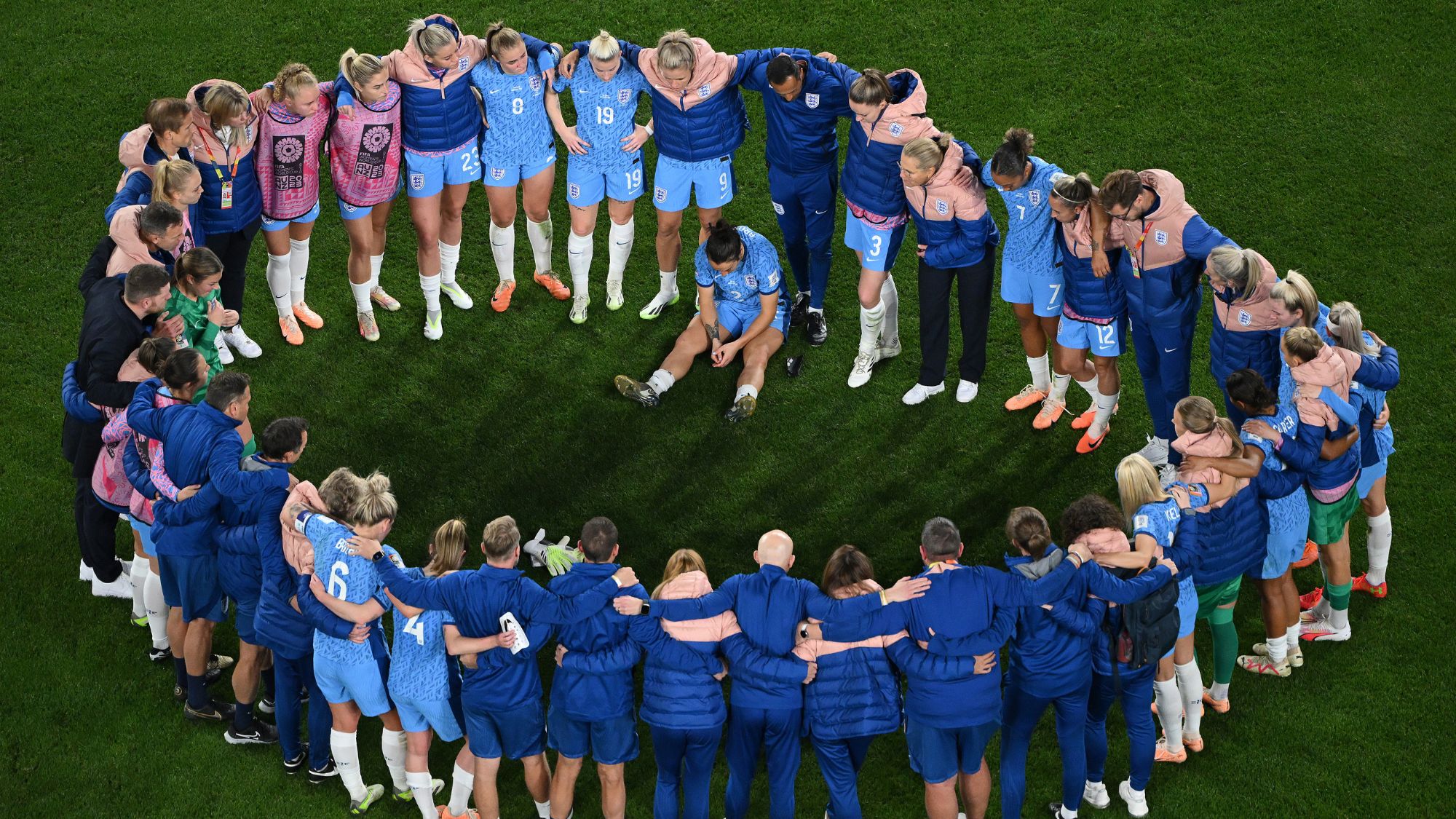
2024: The awards just keep coming
By 2024, the Lionesses were a household name, so much so, they were recognised significantly in the King's New Year's Honours list. Three players received awards - defender Millie Bright with an OBE, and goalkeeper Mary Earps and attacker Lauren Hemp both with an MBE.
An additional seven Lionesses voted into the FIFPRO Women's World 11. This was a benchmark moment as it set the new record for the most players from one country in the list.
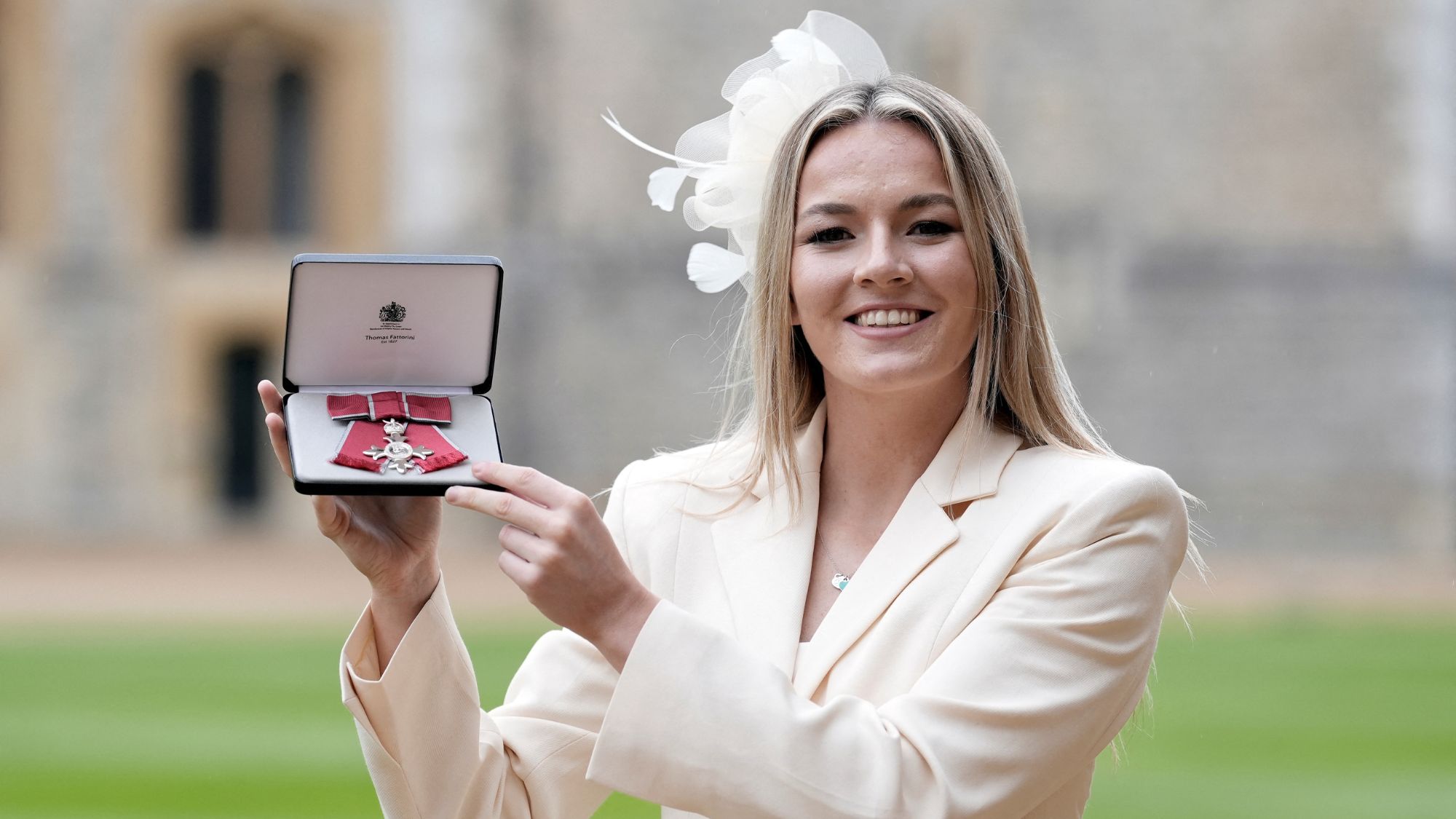
2025: The Lionesses win their second consecutive Euros final
It's fair to say that the 2025 Euros got off to a bit of a rocky start for the Lionesses. They lost their first match against France 2-1, struggling to bag an equalising goal before full time.
But they came out fighting for every match after that, beating the Netherlands, Wales, Sweden, and Italy to earn their spot in the final.
It was a monumental, emotional, and nail-biting match - their opponents Spain put up one hell of a fight, with over double the amount of goal attempts and a powerful and efficient strategy threatening to knock England out at several match points. But we never gave up, clinging on through extra time and bagging the win during penalties with some tremendous saves from goalkeeper Hannah Hampton and a winning final goal from Chloe Kelly.
Not only have the Lionesses inspired the nation, again, but set a whole host of records along the way. Yesterday's win made us the first England team to win two back to back finals, and the first ever England team to win a Euros final on foreign soil. Attendance records were also smashed out the park by nearly 100,000 - a staggering 657,000 people attended the game in Basel.
From all of us here at Marie Claire UK - the biggest congratulations on making history, yet again.
A post shared by Lionesses (@lionesses)
A photo posted by on
These thirteen standout moments remind us that women can do anything they set their minds to, despite bans, support or ridicule.
Shop our favourite World Cup kit now:

Dionne Brighton is the Social Media Editor at Marie Claire UK. After writing about everything from nail trends to celebrity style moments for Marie Claire UK, Glamour UK and Woman & Home, she now leads the brand’s social strategy. Her work transforming Marie Claire UK’s social platforms earned her a BSME Talent Award nomination.


